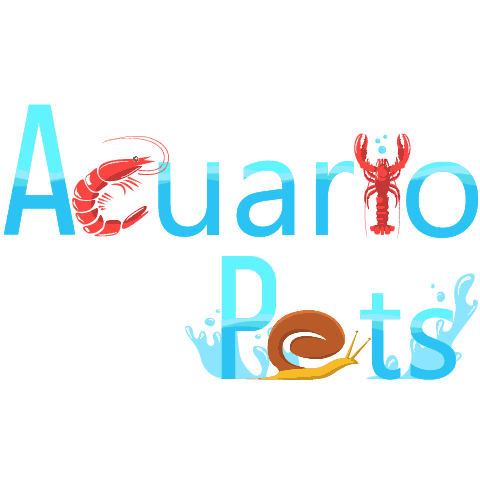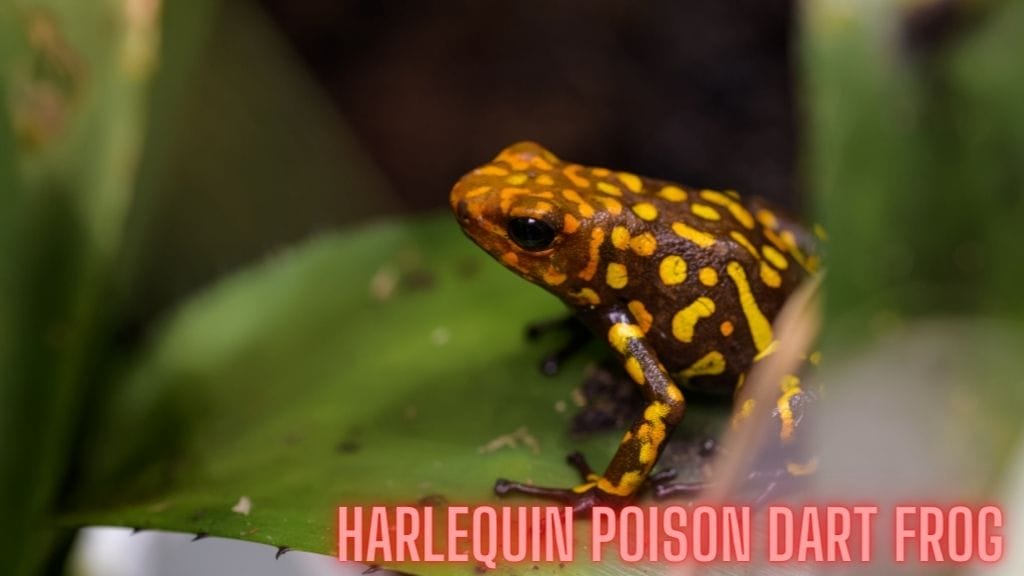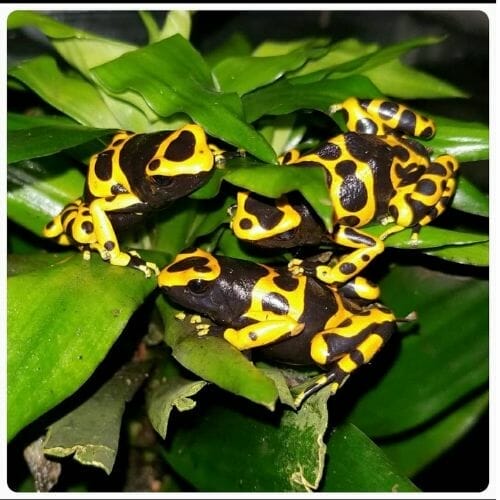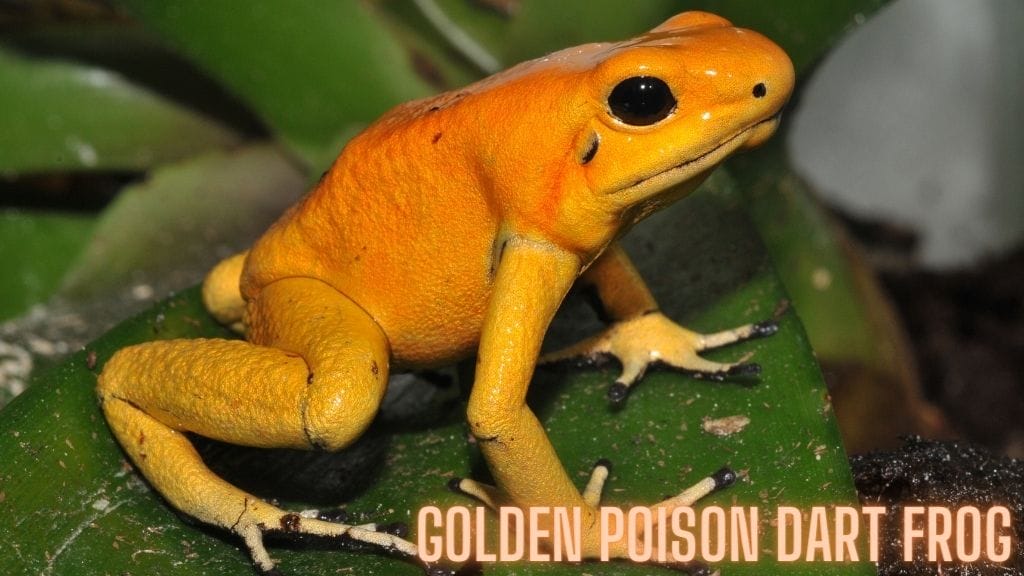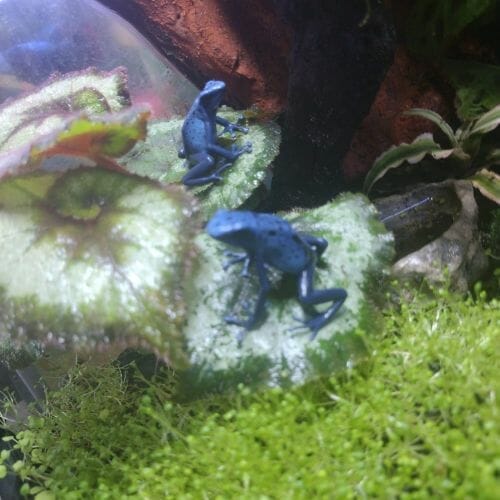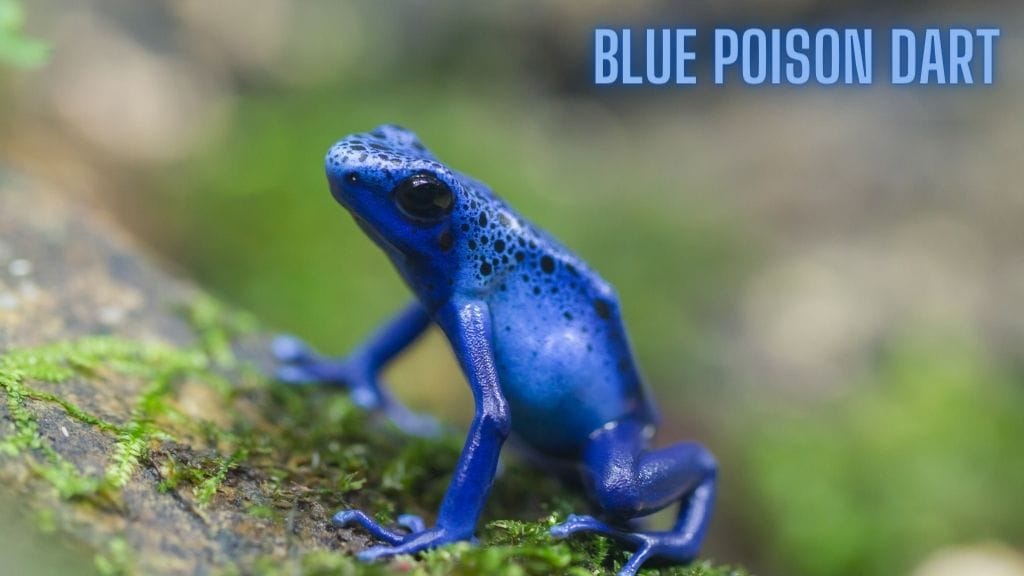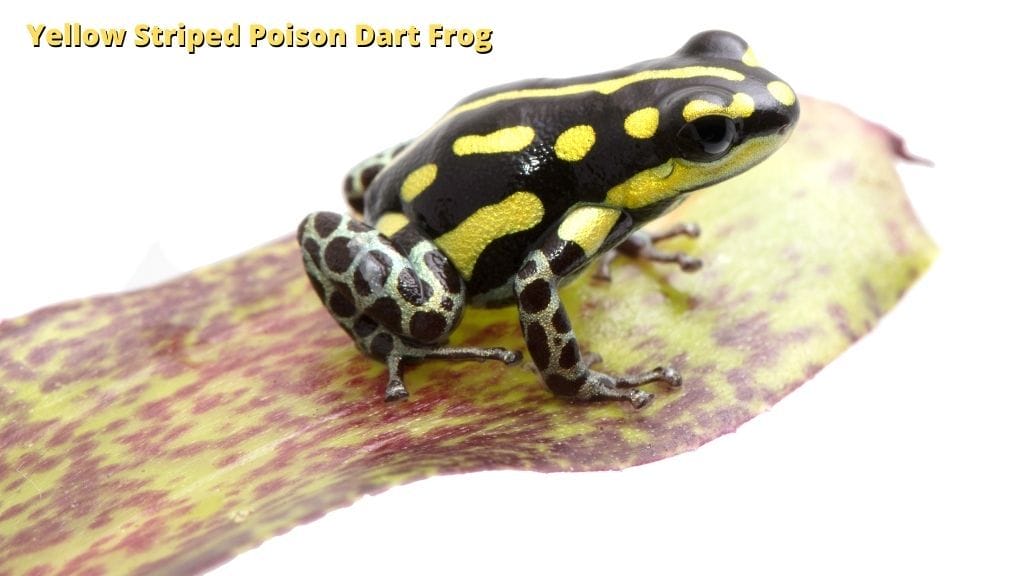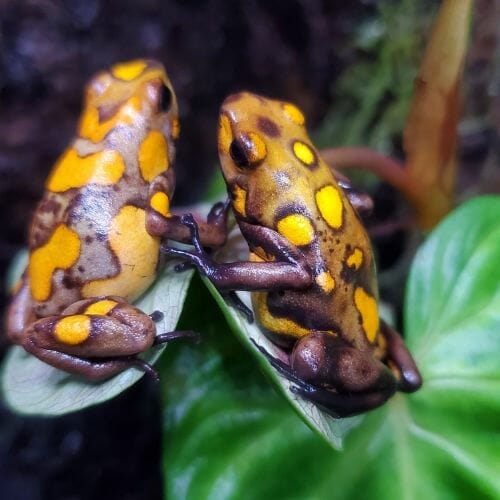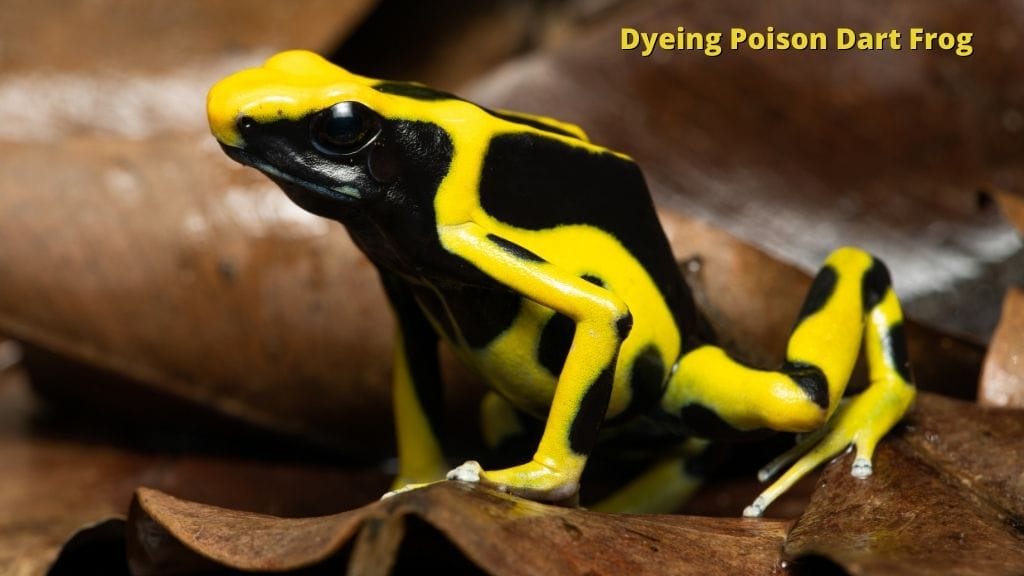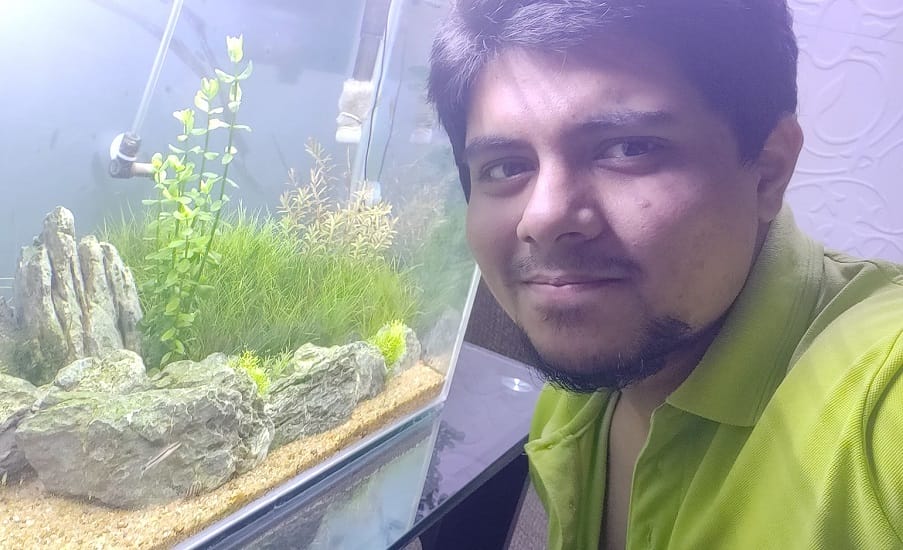How Many Dart Frogs Can Live Together?
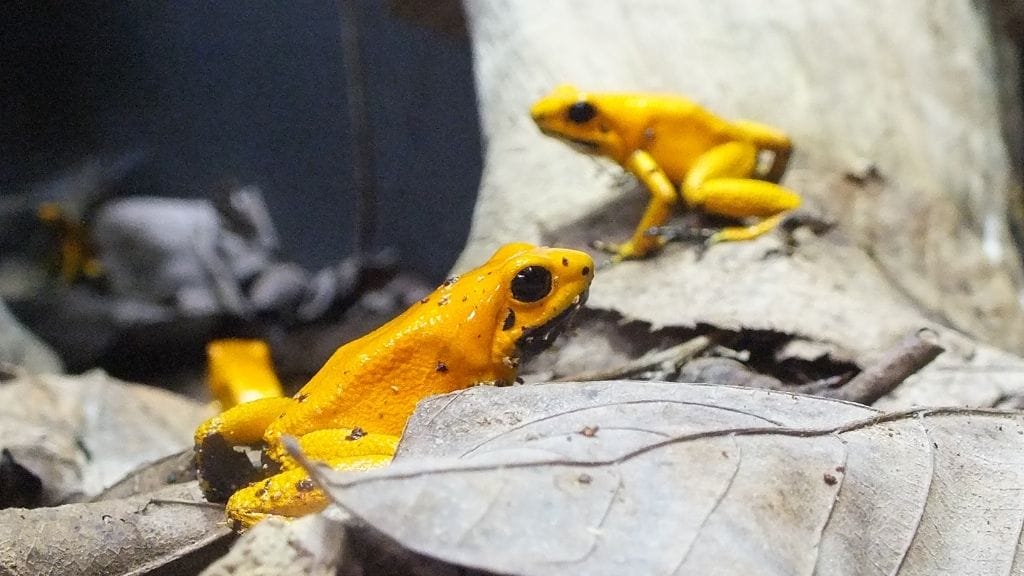
I’m pretty sure, before stepping into dart frog hobby, you must be blazed with the most frequently asked question, “how many dart frogs can live together?” Well, no worries, I’ve also faced this question a bunch of times, and would like to answer now.
While the dart frogs are juvenile, a tiny group of around 15 to 20 can live together in a large vivarium. But as soon as they grow up, and become mature, they’ll start fighting with each other. It is recommended to keep not more than 3 adult dart frogs in a single vivarium.
Dart frogs are surprisingly aggressive to each other and highly territorial by born. The number of dart frogs you can keep together generally depends on the environment, age, and tank size.
As long as you’re following some ground rules that can alleviate aggression, and housing dart frogs in one vivarium, you’re good to go. But I’d strongly recommend you to keep one species in one vivarium, not mix it up with other species. Let’s check out why, and what you should do afterward to keep a dart frog.
How Many Dart Frogs Can I Keep in a Tank Together?
It’s not an easy-to-answer question. Before you can determine the actual number, there are some points you need to consider. The following points are the size of the dart frogs, their temperament and habits, whether they are more likely to climb or like to be terrestrial, and how much time they require for maintenance.
Besides these, there is a general rule to solve this issue. You will have to calculate a minimum of 5 gallons of space for each dart frog. This is why the best way is to have a massive tank considering the space.
Now, calculating the gallon will not always be your way out. For example, a 55-gallon tank has the dimension of 48″×12″×18″ as its length, width, and height. Though it is a 55 gallon one, you’ll have to calculate it as only 30 gallons as it doesn’t have enough floor space for most frog species so that they can have their own territories. Considering the floor space, a 40-gallon tank is more frog-friendly, though it is 15 gallons smaller.
However, if you’re planning to house more than 3 or 4 dart frogs, you’ve to ensure a large size vivarium. When you’re about to get a frog like Phyllobates terribilis – the largest one indeed, you must opt for a 20 or 30 inches tall vivarium or more than that.
Can you mix dart frogs together?
You’ll have to seek 75-gallon tank or up to that while mixing up 3 or 4 frogs of multiple species. Anyways, I’d urge you to stay calm, and go slow if you are a beginner. Reach out to explore particular species, and their lifestyle to house a bunch of frogs in a tank.
I’d truly discourage you from adding different frog species even if you’r able to do so, or afford them. The top-most reason is every vivarium has its equilibrium and when you’ll add a bunch of new frogs or even a single one, it’ll surely upset the tank’s balance and result in aggression.
My suggestion is, if you’ve no other options left but to add new frogs to your existing tank, you can try disrupting your tank a bit, like doing some major cleaning, and overhaul. Then add the new frogs with the previously existing frogs at the same time, and replace the things than they were before.
BUT, DON’T add juveniles or froglets with your old frogs, otherwise you can see them dead in a few days or so. The new frogs you’ll add in the tank should be similar sizes to the adult ones.
Should You Keep Different Types Of Dart Frogs Together?
Honestly speaking, I’d say it’s a gloom, and doom situation, cause housing different species of dart frogs in a single vivarium will render you nothing but havoc in the long run. Only it’s best compatible for individual species, or morphs of a species.
By nature, these frogs are highly territorial, and aggressive, even against their own species. So, if you platter multiple kinds in the same tank, it’ll cost you unnecessary deaths, and your frogs’ stress.
Generally, I’d break down Dart Frogs into 2 groups – one of the same species, and the other one of sexed adult pairs.
You can keep all Phyllobates, Dendrobates Auratus, Epipiedobates, Dendrobates Lecuomelas in one group without any real problems. Well, though territorial aggression doesn’t go away from their gene, they don’t go to an extent fight where health could be the ultimate price.
Here, breeding females still call for a fight over males, and even swallows other’s eggs. Make sure to keep a close eye when it’s breeding time, and consider some wise decisions for healthier eggs. And guess what? Keeping various species would cause crossed species or hybridizing, which I’d totally discourage, even it’s averted in the Dart Frog hobby by all experts.
The other group, especially Dendrobates azureus, and Dendrobates tinctorius, can be housed as individual adult pairs. But point to be noted that two females will quarrel, and fight if housed in similar vivarium. It’s better to go for one female, and two males are the most suitable pairs.
Why Different Species of Dart Frogs Are Discouraged to House in the Same Vivarium?
This isn’t a simple question to put an end. Plus, it’s related to another putative but hidden question, “Why is Hybidraizing of Dart Frogs Discouraged in the Hobby?” Well, let’s break down both of the questions in one, while leading you to every nitty-gritty you should know.
Most of the species of Dart Frogs that fuel a common relationship or close to that can breed among each other. For example, Dendrobates auratus, Dendrobates tinctorius, Dendrobates truncates, and Dendrobates lecucomelas are kindreds, keep possibilities breeding, and producing offsprings. When various species mates together, and gives birth to offspring, the process is named hybridization, which results in hybrids.
Among various kinds of dart frogs, individual species show distinct patterns, and colors in grown populations. These individuals don’t come along, and breed while they’re out in nature, but may do so when kept together in a similar place. Breeding frogs of two separate population are known as crossbreeding, thus produced offsprings are name crosses.
Well, not to surprise, crosses or hybrids are both apparently healthy, though the dart frog hobbyists dislike them. Pretty much, they’re sterile, which means unable to reproduce. Once breeding of hybrid or cross is set to sail, you can’t turn back, and get the 100% wild one. Both genotype, and phenotype of a frog are gone forever.
If I give you a bit more hunch, you can’t hunt the actual morph again of a species. And to your surprise, most of the genuine species in the wild are on extinction due to natural calamities, and living in different habitats. To protect them, many hobbyists, scientists, experts forbid interbreeding among different morphs, and localities. And I’m with them.
Types of Dart Frogs that Can Live Together
The world is full of dart frog species to pet, so I’ll name a few to assist you on the way. But it’s vital to keep one species in one tank to prevent hybridization, and cross-breeding.
Before you start petting frogs, one thumb rule to follow:
The larger your tank, the more frog you can keep
Dendrobates auratus (Green/Black Poison Dart Frog)
Dendrobates Auratus is an excellent species for beginners, and commonly known as Green and Black Poison Dart Frog. They are surprisingly non-aggressive (don’t show any kind of aggression in almost any situation), colored, and vary according to populations. Plus, Auratus are pretty easy to keep, breed, and can be kept in groups.
Based on the species, females grow around 0.25 to 0.5 inch, and males 1 to 1.5 inch. You can house around 1 to 3 of them in a 10-gallon tank, measuring about 18 by 18 by 18 inches or 20H. It’s better to opt for a horizontal tank, instead of a vertical one, because they won’t climb out like other dart frog species.
Dendrobates leucomelas (Bumblebee Poison Dart Frog)
Dendrobates Leucomelas is known by many names, yellow-headed dart frog, bumblebee poison dart frog, yellow-banded poison dart frog, and simply called “leucs.
Bumblebee Poison Dart Frog is fiercely territorial, which requires more care eventually. These are bold, active, and make a great group with having the loudest, and pleasant chirps.
Well, likewise the Auratus, a tank of 10 gallons can hoard 1 to 2 leucomelas, but a vivarium measuring 18 by 18 by 18 inches can opt for 3 frogs. Before you keep them, you must know that they come from a low humidity area. So, humidity around 65 – 85℉ is preferable.
Dendrobates tinctorius (Dyeing Poison Dart Frog)
This species is commonly renowned among the dart frog hobbyists as dyeing poison dart frog.
They are best left in a single vivarium, not mixed up with other species. Because they tend to mix up, match, and eventually lead to cross breeding.
Moreover, dyeing poison dart frogs can do well in group, when they’re still juvenile. But as soon as they become mature, you’ll have to split them up. Adult females tend to fight along with each other during the mating season. So, it’s better to separate when they age, and keep one female in individual vivariums.
Anyways, you can manage 1 to 3 frogs in a vivarium of 10 gallons as similar to leucomelas, and auratus. In the wild, they survive around 4 to 6 years, whereas, in captivity, they can live for over 10 years generally.
Adelphobates galactonotus (Splashback Poison Dart Frog)
Adelphobates galactonotus is one of the species of poison dart frogs, which is marked as splashback poison frog or splash-backed poison frog.
They should be kept in a large terrarium cause they are explorers, and territorials by nature. You can keep them in groups, for instance, a group of 3 females, and two males require an area of 80 by 50 by 50 inches or more spacious areas. That being said, in easy words, a 45 gallon or larger is needed. Plus, you’ve to ensure they’ve some climbing areas.
Dendrobates truncatus (Yellow Striped Poison Dart Frog)
Dendrobates turncatus goes by many natural names, Yellow Striped Poison Dart Frog, Yellow Truncatus, Nilo Poison Arrow Frogs, and Yellow Truncs. Though they are rare in the dart frog hobby, you can still go for them.
A 10-gallon vivarium can opt for 1 to 4 of them nicely. As similar to the lucomelas, auratus, this species can be housed in groups normally. And if you are a beginner in dart frog keeping, it can be your go-to choice.
Phyllobates terribilis (Golden Poison Dart Frog)
Phyllobates terribilis is the infamous but deadliest dart frog species on the terra, goes by the name golden poison dart frog.
However, the golden poison frog is far by the largest among dart frog species, coming in 2.4 inches. You can house a small group of them, for example, 1 to 3 frogs in a 20-gallon tank. And don’t be mistaken to keep them in groups with other species. They are truly bold species.
Well, these were some of the true species that can live together in groups, but I’m repeating again that don’t mix up species.
Tips to Keep Dart Frogs in Groups
Well, who said that you can’t keep more than one dart frog? You can surely do this by following some ground rules. Here they are:
Provide Barriers
You wouldn’t wish your frogs to beat down each other, or keep staring all day to make a fight. Well, even if the frogs don’t call a fight upfront, another frog’s presence can stress out the other one. Planting broad leaves, leaf litter, wood, dense grasses can provide multiple places to introduce barriers, and hiding places for frogs.
Adequate Feeding
Well, when you’re living with an empty stomach, you won’t be yourself, and neither the frogs. If you don’t provide enough food for the group, the frogs’ll start fighting over the limited foods, and eventually die. Follows these tips to make sure your frogs stay healthy, and don’t fight over food:
- Seeding bunch of springtails
- Go for multiple feeding sessions, and stations
- Spread fruit flies (mostly eaten snack by frogs)
Raise Frogs Together
When you introduce all of the frogs – while still juvenile – into a single vivarium at the same time, they’ll get to live along as they keep growing. They won’t be aggressive to each other, and also delay the breeding activity. By delaying, the frogs will get a boost in their growth.
Watch Out the Sex Ratios
Generally, if you’re keeping more females than males, surely you’ll see some fights. It’s better to keep the ratio similar to 1:1 or more males. Well, I know that most frog keepers go for juveniles or froglets. So, ensure that you’re always looking after them as they grow, and grown enough to proceed with sex.
Frequently Asked Questions
How many dart frogs can be kept in a 20 gallon tank?
As a general rule of thumb, a minimum of 5 gallons of space for each dart frog is necessary. So, in a 20 gallon tank, you can keep 3 to 4 dart frogs. However, I’ll recommend not keeping more than 3 dart frogs in a single enclosure.
Sometimes calculating the gallon capacity of a tank may not be sufficient. For instance, a 55-gallon tank with dimensions of 48″ x 12″ x 18″ may only provide enough floor space for 30 gallons.
This means that it may not be suitable for some frog species to have their own territories. In such cases, a 40-gallon tank may be more frog-friendly, even though it has a smaller volume of 15 gallons.
What animals can live with dart frogs?
Some animals that can live with dart frogs include small lizards, such as geckos and anoles, tree frogs, Bolitoglossa salamanders, and spiders.
However, I do believe it is best to keep dart frogs with only other dart frogs to avoid any potential conflicts or health issues.
How many dart frogs can be kept in a 40 gallon tank?
As a general rule of thumb, a minimum of 5 gallons of space for each dart frog is necessary. So, in a 40 gallon tank, you can keep 6 to 8 dart frogs.
However, the number of dart frogs that can be kept in a 40-gallon tank may also depend on the size and species of the dart frogs, as well as the layout and furnishings of the tank.
If you want to keep that many dart frogs in a single enclosure, ensure that the enclosure has enough floor space for all of the dart frogs, as well as lots of hiding spots.
How many poison dart frogs can live together?
As a general rule of thumb, it is recommended to keep no more than 3 adult poison dart frogs in a single enclosure. Also, you’ll need to allocate a minimum of 5 gallons of space for each poison dart frog.
So, if the enclosure is 20 gallon, you might keep 3 poison dart frogs comfortable in there.
Can geckos can live with dart frogs?
Some species of geckos can live with dart frogs. Mourning geckos, in particular, are often kept in the same enclosure as dart frogs because they are small, peaceful, and insectivorous, which means they do not pose a threat to the dart frogs.
How many dart frogs can be kept in a 10 gallon tank?
Even though you can keep 2 dart frogs in a 10 gallon tank, I’ll recommend sticking to just 1 dart frog. One adult dart frog can comfortably live in a 10-gallon tank with plenty of room for exercise and exploration.
Conclusion
Dart Frogs are quite easy to pet if you know the ways, even in groups. When the frogs are babies, juveniles, you can go for 15 to 20 of them in a massive tank. But remember to observe their nature, behavior, and aggressiveness as soon as they grow up.
If you notice aggressive behavior among them or if they aren’t comfortable anymore living in the same enclosure, you must take necessary steps.
Good luck.
About Author
Hello, I’m Muntaseer Rahman, the owner of AcuarioPets.com. I’m passionate about aquarium pets like shrimps, snails, crabs, and crayfish. I’ve created this website to share my expertise and help you provide better care for these amazing pets.
Disclaimer
This site is owned and operated by Muntaseer Rahman. AcuarioPets.com is a participant in the Amazon Services LLC Associates Program, an affiliate advertising program designed to provide a means for sites to earn advertising fees by advertising and linking to Amazon.com. This site also participates in other affiliate programs and is compensated for referring traffic and business to these companies.
